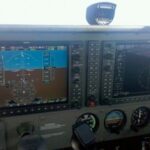Baking at elevations of 3500 feet or more is considered high elevation baking. Since the air is thinner the higher your elevation is, of course this causes a dilemma for bakers. This article will address some of these issues and provide the high altitude baker with tips and tricks to help you in the kitchen. No longer do you have to deal with tough sponge like muffins or fallen cakes. Baking does not have to become a science experiment when you live in the mountains.
Breads
Depending on how much humidity you have at any given point will affect your bread flour. Flour can be more dry at higher altitudes. In which case flour in bread recipes can be reduced just a bit to yield better results. There is no tried and true way to determine the reduction though as humidity will vary according to where you live.
The higher the altitude the faster yeast breads will rise. This is actually a plus in my book! Though if you leave your bread rising for too long you chance over rising. This is no big deal if you have to knead but for already to bake breads this can pose a problem. The rising process in bread baking is essential in the finished loaf. The rising process is what develops the flavor of your yeast breads. Punching your dough down twice can help slow the rising period at higher altitudes. Generally bread baking is easy to figure out at high altitudes if you are familiar with the process of baking bread.
Cakes
Cakes are probably the trickiest of all baked goods to bake at high altitudes. Generally cakes rise too fast at high altitudes. This often results in falling midway through the baking process. Increasing the baking temperature by 25 degrees should help remedy this problem.
Water at high altitudes evaporates quickly. This can cause a problem with the sugar in your cake recipes due to higher concentrations. You will want to reduce the sugar in your recipes and increase the amount of liquids in your cake recipes. This will help ensure that you won’t end up with fallen cakes. Adding an additional egg can help very rich cakes come out better as well. You may also need to decrease the fats such as oil, butter or margarine in very rich cakes just a bit.
When making angel food cakes or sponge cake it important not to over beat the eggs in the recipe. Over beating will cause too much air to form in your cake and it will fall. Be sure to beat your eggs only until they just fall over and not stiff peaks.
Cookies
Most cookie recipes are easily adjustable. The most important thing being flavor. Sometimes at higher altitudes cookies can have a slightly bitter taste. Reducing the amount of baking soda and increasing the amount of baking powder in your cookie recipes can help. Again there is no set rule for decreasing and increasing. You will likely have to play around with your recipes a bit to get it just right.
Muffins, Bars and Brownies
Muffins, bars, brownies and biscuits have some of the same problems as cakes and cookies obviously. A good rule to use is reduce the sugar by 1 tablespoons and increase your liquids by 1-2 tablespoons. Decreasing baking powder by 1/8 of a teaspoon in your recipes can also help improve the flavor.
More liquid is needed when making pie crusts as they tend to dry out fast. Increasing the water used by a few tablespoons will help. I like to use one at a time until the desired consistency is reached. Your dough should be pliable but not too sticky and not too dry.
With the tips in this article you should be on your way to understanding baking at high altitudes. Enjoy those baked goods!



